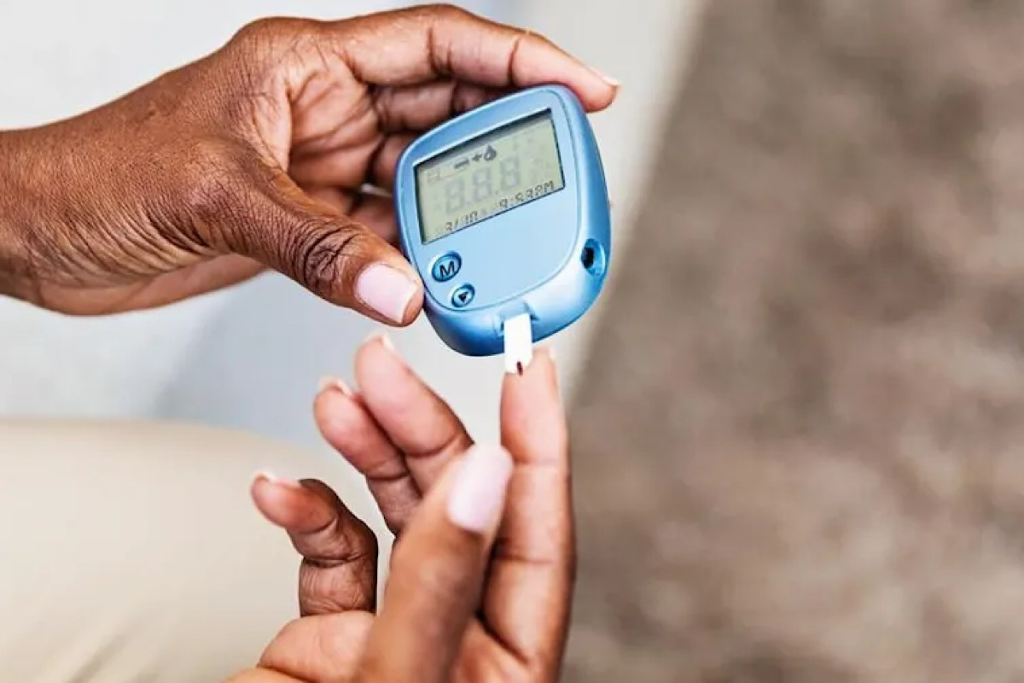As a parent, it’s important to know about type 1 diabetes risks in kids. Sadly, there’s no way to prevent it. This is because the body stops making insulin.

But scientists are working hard to find ways to stop it or manage it better. New tech for tracking blood sugar and giving insulin has made life easier for kids with type 1 diabetes. Learn how to prevent type 1 diabetes child in your child with proven lifestyle changes, diet tips, and early detection strategies.
It’s important to know what causes Type 1 diabetes to find ways to prevent it. This disease is a chronic autoimmune condition. It happens when the body’s immune system attacks and destroys the insulin-producing beta cells in the pancreas.
The exact cause of Type 1 diabetes is not fully understood. But research shows it’s a mix of genetic predisposition and environmental triggers that start an autoimmune response.
Type 1 diabetes makes the body’s immune system attack the pancreas. This attack harms the insulin-producing beta cells. As a result, the pancreas can’t make enough insulin. Insulin is key to controlling blood sugar levels.

Full screen
Delete
Genetics play a big part in who gets Type 1 diabetes. People with a family history are more likely to get it. But genetics alone doesn’t cause the disease. Environmental factors also play a role.
Some possible environmental triggers include:
Scientists are working to figure out how these factors work together with genetics. They aim to understand what triggers the autoimmune response in Type 1 diabetes.
Research is showing new hope in preventing type 1 diabetes in kids. Right now, there’s no surefire way to stop it. But scientists are looking into ways to prevent or delay it.
Type 1 diabetes happens when the body attacks and destroys insulin-making cells in the pancreas. This is called pancreatic beta cell destruction. Knowing how diabetes starts is key to finding ways to stop it.

Doctors agree that there’s no proven way to prevent type 1 diabetes. But many studies are trying to find new ways. They’re looking into treatments and how the environment might trigger the disease.
Genetics also plays a part in type 1 diabetes. But not everyone with a genetic risk gets the disease. This shows that other factors are involved, too.
There are many myths about preventing type 1 diabetes. Some think changing what you eat during pregnancy or early childhood can help. But there’s no solid evidence for this.
It’s important to trust reliable sources and talk to doctors. This way, parents can make smart choices for their child’s health. It might even help lower the risk of complications if their child gets type 1 diabetes.
Even though we’re waiting for more research, staying updated and working with doctors is vital. It helps manage the risk of type 1 diabetes in kids.
Knowing the risk factors for Type 1 diabetes is key to early detection and prevention. This autoimmune condition is caused by genetics, environment, and demographics.
Genetics is a big part of Type 1 diabetes. Some genetic markers make kids more likely to get it. If a family has Type 1 diabetes, a child is at higher risk.
Viral infections can start Type 1 diabetes in those who are genetically prone. These infections can lead to an autoimmune attack on the pancreas. Knowing these environmental triggers helps in finding ways to prevent them.
Autoimmune markers, like autoantibodies against pancreatic cells, show an immune attack on insulin-making cells. Finding these markers helps spot those at risk of Type 1 diabetes.
The risk of Type 1 diabetes changes with location and demographics. Places farther from the equator and certain ethnic groups face higher risks.
Understanding these factors helps us find and help kids at risk. We can try to prevent or delay Type 1 diabetes in them.
Type 1 diabetes affects children all over the world. It’s vital to catch it early and prevent complications. Knowing how it progresses and acting fast is key.
Spotting the signs of type 1 diabetes is the first step. Look out for increased thirst, more trips to the bathroom, feeling tired, and blurry vision. Parents should watch for these signs closely. Early detection can make a big difference.
Diabetic ketoacidosis (DKA) is a serious issue for type 1 diabetes patients. It happens when there’s not enough insulin. Knowing the triggers of type 1 diabetes and how it develops helps prevent DKA.
Keeping up with health checks is essential for managing type 1 diabetes. This means regular doctor visits, tracking blood sugar, and adjusting insulin as needed. Parents can help their kids stay healthy and active.
Understanding how type 1 develops and knowing the warning signs is important. Parents can greatly help manage their child’s condition and lower the risk of complications.
Researchers are working hard to find ways to stop type 1 diabetes in kids. They want to help families dealing with this autoimmune disease. They’re studying how the immune system goes wrong and attacks the pancreas, causing immune system dysfunction.
Many clinical trials are looking into ways to stop or slow down type 1 diabetes in kids. They’re trying different methods, like immunotherapy, to keep the pancreas working right.
One study is looking at a new way to treat the immune system. It aims to stop the immune cells from attacking the insulin-making beta cells. This could help prevent type 1 diabetes.
Immunotherapy is showing great promise in fighting type 1 diabetes. It tries to fix the immune system so it doesn’t attack the body’s own tissues. Researchers are testing different ways to do this, like targeting specific immune cells.
These new treatments aim to tackle juvenile diabetes early on. They might stop the disease from getting worse. Immunotherapy could be a key to preventing type 1 diabetes in kids.
Families with a history of type 1 diabetes can help research by joining clinical trials. These studies need kids at risk to test new ways to prevent the disease.
By joining these trials, families help find new treatments. They also get access to the latest medical care. This is a big step towards stopping type 1 diabetes in kids.
There’s no cure for type 1 diabetes yet, but new ways to manage it offer hope. Learning about diabetes helps us find ways to stop it in kids. This is key to preventing type 1 diabetes in children.
As research grows, supporting your child and keeping up with new T1D findings is important. Together, we can make life better for kids with T1D. We can work on early detection, lessening complications, and finding new ways to prevent it.
Keeping current with the latest research and care helps us avoid complications in kids with T1D. Our dedication to understanding and treating type 1 diabetes will help us find ways to prevent it. This will improve their lives and our understanding of the disease.
Type 1 diabetes occurs when the body attacks its own insulin-making cells. This leads to a lack of insulin. It’s not fully understood, but genetics and environment play a part.
There’s no known way to prevent type 1 diabetes yet. But scientists are working hard to find ways. They’re looking at risk factors and new treatments.
Risk factors include genetics, environment, and certain markers. Knowing these can help spot it early. This might help prevent it, too.
Watch for signs like thirst, more trips to the bathroom, tiredness, and blurry vision. Regular check-ups are key. This way, you can catch it early.
Diabetic ketoacidosis is a serious problem. It happens when ketones build up. Catching type 1 diabetes early and managing it well can prevent it.
Yes, there are trials and studies on new treatments. They’re looking at things like immunotherapy. This gives hope for the future.
You can find trials through doctors, research places, or groups focused on type 1 diabetes. They might offer new ways to treat or prevent it.
Genetics is a big part of type 1 diabetes. Some genes raise the risk, but not everyone with them will get it.
Things like viruses might trigger type 1 diabetes in people who are already at risk. Scientists are trying to figure out more about this.
Subscribe to our e-newsletter to stay informed about the latest innovations in the world of health and exclusive offers!
WhatsApp us